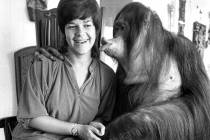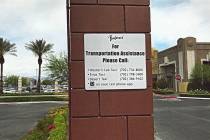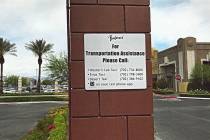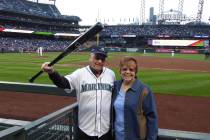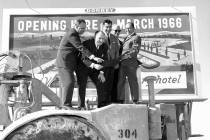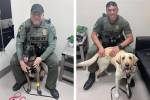Shooting didn’t end DEA agent’s love for job and desire to live
The two bullets that ripped into and out of Don Ware did a lot of damage to the 35-year-old federal drug agent's body.
One bullet from an M16 rifle entered his lower back on the right side and exited through his abdomen, then tore through his right forearm, injuring bones, muscles, nerves and organs along the way.
The second shot entered through the back of his chest, injuring his liver and gall bladder, and passed through the front of his chest before entering his left forearm.
Yet, when his pregnant wife, Rita, arrived in Yuma, Ariz., the Las Vegan was still alive.
And he fought to stay that way.
During his six-month hospitalization, the 6-foot-2-inch man who had weighed 212 pounds, dwindled to less than 100 pounds. Infections were a recurring problem.
As detailed in Thursday's column, three Mexican drug dealers planned to kill him and Drug Enforcement Administration agent Roy Stevenson in a drug buy gone awry on June 9, 1975. The agents survived by playing possum following a gunfight in Sonora, Mexico.
Stevenson, then 41, was shot twice, but his wounds weren't life-threatening. He was shot in the shoulder and knee. Now 77 and living in Utah, Stevenson went on disability immediately after the shooting.
After six months of medical treatment in San Diego and countless procedures, Ware went back to work, putting to good use his skills as an agent skilled in putting together complex conspiracy cases.
Ware knew he could never be promoted, but still wanted to work, despite being restricted to limited duty.
However, he no longer could roughhouse in the pool with his four daughters. One blow to his injured abdomen, and the hernia covered with delicate skin grafts could kill him, doctors warned.
He was embarrassed that the hernia in his abdomen looked like a beer belly and the skin covering it was so thin you could see his intestines. He lived with chronic pain.
Life revolved around medical visits and treatments.
In a 2003 letter to U.S. Sen. Harry Reid, Ware wrote, "I barely survived the beating and shooting, but I did thanks to some excellent doctors, and the grace of God. "
He told the senator, "I was shot in 1975 because I was a government employee willing to do the job I was paid to do."
Rita Ware said he never lost his love for the Drug Enforcement Administration, although he became frustrated with the Office of Federal Employees' Compensation micromanaging his medical treatments, deciding which medications and treatments he should and shouldn't have.
The letter to Reid was both a frustrated venting and a grim documenting of the disabilities he lived with for the last half of his life.
His last surgery for a hip replacement caused his death. However, Rita cannot discuss details of a malpractice lawsuit filed over Ware's death.
After the shooting by Mexican drug dealers, Don Ware took life more seriously, his widow said.
"He said he had such a desire to live, and he would not give up. Don was a fighter."
Today, Don Ware's family is in Washington, D.C., to attend a ceremony adding his name to the list of about 19,000 law enforcement officers killed in the line of duty on the wall of the National Law Enforcement Officers Memorial.
Friday, in a somber ceremony, his plaque joined 81 other names on the DEA Wall of Honor of DEA personnel killed in the line of duty.
If he had died the day he was kidnapped, beaten and shot twice, his name would already have been up there for the past 36 years.
The honors which may bring his family some peace were delayed, because Don Ware fought to live the day he was shot and for decades afterward.
Jane Ann Morrison's column appears Monday, Thursday and Saturday. E-mail her at Jane@reviewjournal.com or call (702) 383-0275. She also blogs at lvrj.com/blogs/morrison








